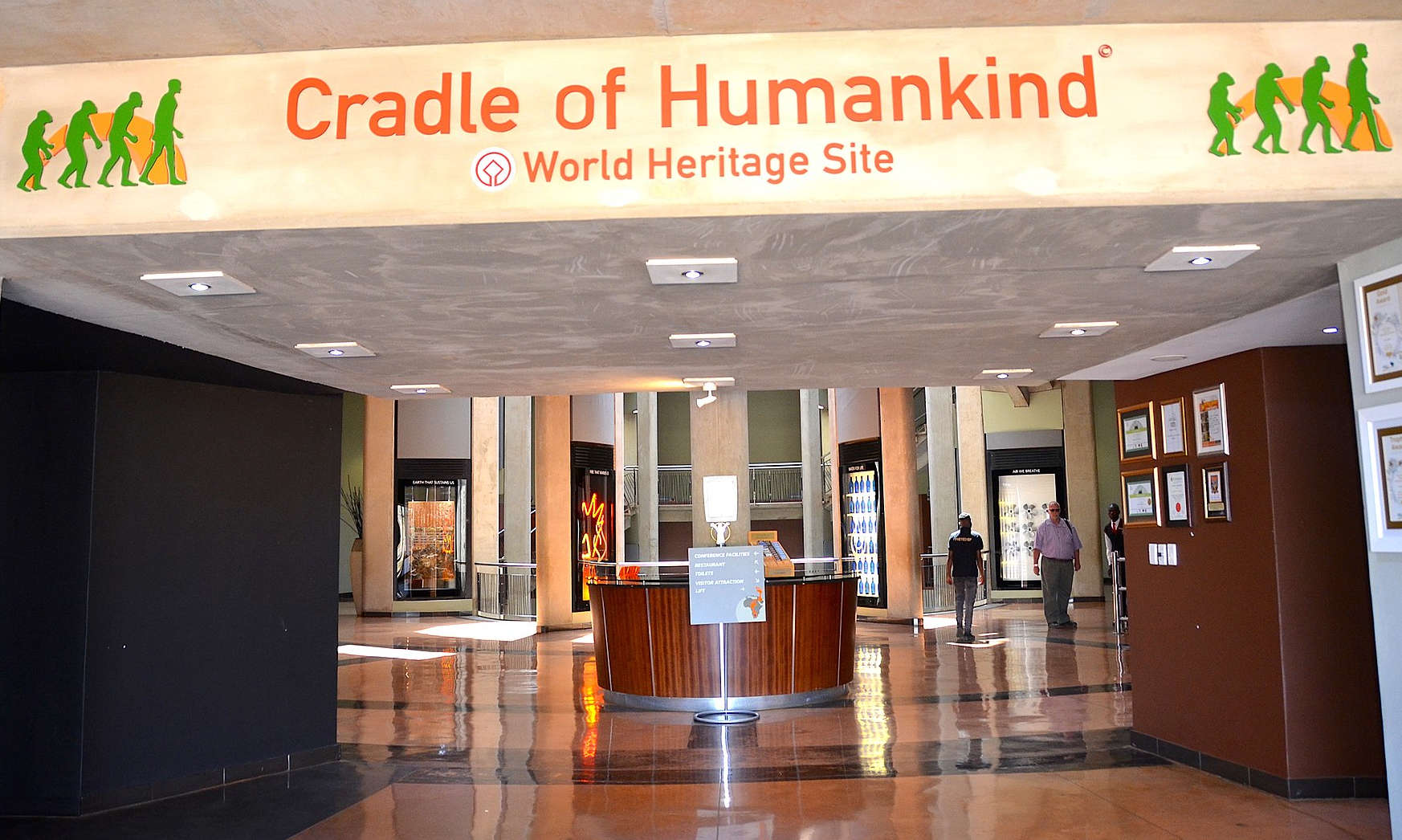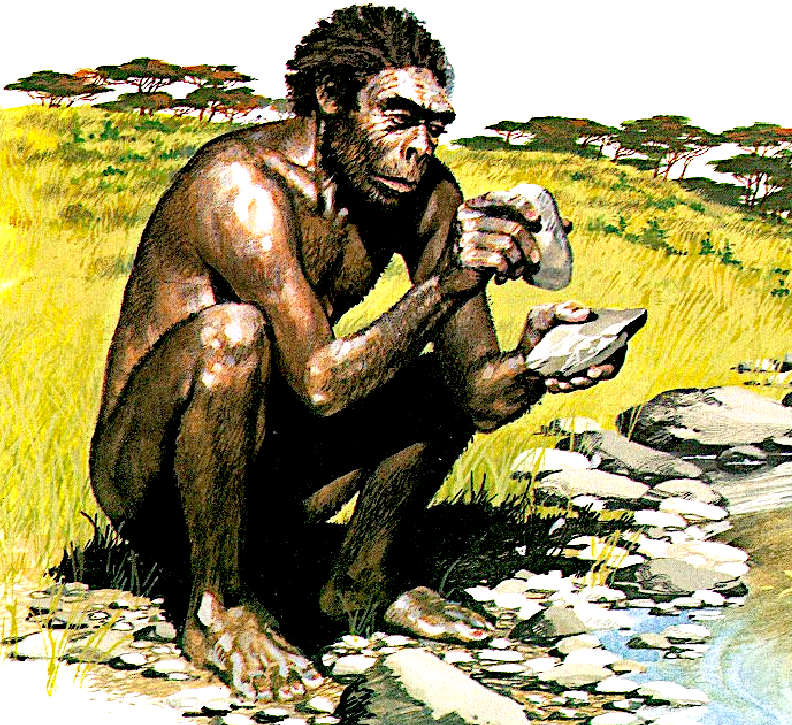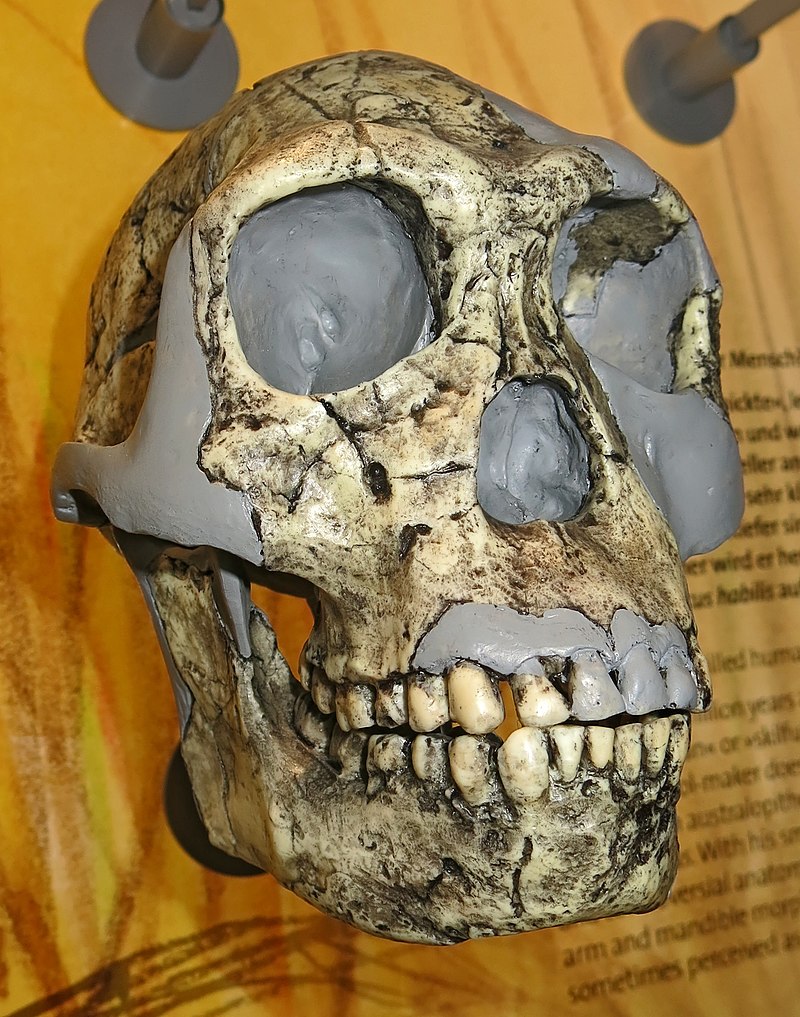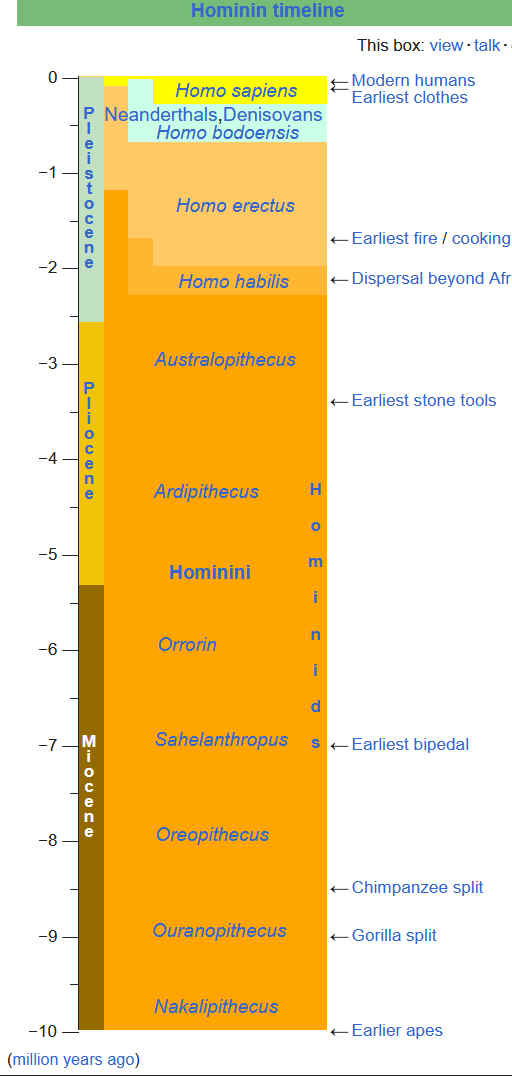
The
Cradle of Humankind - UNESCO World Heritage Site
Along
with Gauteng Province, Olduvai Gorge
in Tanzania, are two of the most important paleoanthropological localities in the
world. Both World Heritage Sites, leading to the Cradles
of Civilization.
The Cradle of Humankind is a paleoanthropological site and is located about 50 km (31 mi) northwest of Johannesburg, South Africa, in the Gauteng province. Declared a World Heritage Site by
UNESCO in 1999, the site is home to the largest concentration of
human ancestral remains anywhere in the world. The site currently occupies 47,000 hectares (180 sq mi) and contains a complex system of limestone caves. The registered name of the site in the list of World Heritage Sites is Fossil Hominid Sites of South Africa.
According to the South African Journal of Science, Bolt's Farm is the place where the earliest primate was discovered. Bolt's Farm was heavily mined for speleothem (calcium carbonate from stalagmites, stalactites and flowstones) in the terminal 19th and early 20th centuries.
The Sterkfontein Caves were the site of the discovery of a 2.3-million-year-old fossil Australopithecus africanus (nicknamed "Mrs. Ples"), found in 1947 by Robert Broom and John T. Robinson. The find helped corroborate the 1924 discovery of the juvenile
Australopithecus africanus skull known as the "Taung Child", by Raymond Dart, at Taung in the North West Province of South Africa, where excavations still continue.
Nearby, but not in the site, the Rising Star Cave system contains the Dinaledi Chamber (chamber of stars), in which were discovered fifteen fossil skeletons of an extinct species of hominin, provisionally named Homo naledi.
Sterkfontein alone has produced more than a third of early hominid fossils ever found prior to 2010. The Dinaledi Chamber contains over 1,500 H. naledi fossils, the most extensive discovery of a single hominid species ever found in Africa.
ETYMOLOGY
The name Cradle of Humankind reflects the fact that the site has produced a substantially large number of hominin fossils, some of the oldest ever found, dating as far back as 3.5 million years ago.
HISTORY OF DISCOVERIES
In 1935, Robert Broom found the first ape-man fossils at Sterkfontein and began work at this site. In 1938, a young schoolboy, Gert Terrblanche, brought Raymond Dart fragments of a skull from nearby Kromdraai which later were identified as
Paranthropus robustus. Also in 1938, a single ape-man tooth was found at the Cooper's site between Kromdraai and Sterkfontein. In 1948, the Camp-Peabody Expedition from the United States worked at Bolts Farm and Gladysvale looking for fossil hominids but failed to find any. Later in 1948, Robert Broom identified the first hominid remains from Swartkrans cave. In 1954, C.K. Brain began working at sites in the Cradle, including Cooper's Cave. He then initiated his three-decade work at Swartkrans cave, which resulted in the recovery of the second-largest sample of hominid remains from the Cradle. The oldest controlled use of fire by
Homo erectus was also discovered at Swartkrans and dated to over 1 million years ago.
In 1966, Phillip Tobias began his excavations of Sterkfontein which are still continuing and are the longest continuously running fossil excavations in the world. In 1991, Lee Berger of the University of the Witwatersrand discovered the first hominid specimens from the Gladysvale site, making this the first new early hominid site to be discovered in South Africa in 48 years. In 1994, Andre Keyser discovered fossil hominids at the site of Drimolen. In 1997, Kevin Kuykendall and Colin Menter of the University of the Witwatersrand found two fossil hominid teeth at the site of Gondolin. Also in 1997, the near-complete Australopithecus skeleton of "Little Foot", dating to around 3.3 million years ago (although more recent dating suggest it is closer to 2.5 million years ago), was discovered by Ron Clarke. In 2001, Steve Churchill of Duke University and Lee Berger found early modern human remains at Plovers Lake. Also in 2001, the first hominid fossils and stone tools were discovered in-situ at Coopers. In 2008, Lee Berger discovered the partial remains of two hominids (Australopithecus sediba) in the Malapa Fossil Site that lived between 1.78 and 1.95 million years ago.
In October 2013, Berger commissioned geologist Pedro Boshoff to investigate cave systems in the Cradle of Humankind for the express purpose of discovering more fossil hominin sites. Cavers Rick Hunter and Steven Tucker discovered hominid fossils in a previously unexplored area of the Rising Star/Westminster Cave System assigned site designation UW-101. In November 2013, Berger led a joint expedition of the University of the Witwatersrand and National Geographic Society to the Rising Star Cave System near Swartkrans. In just three weeks of excavation, the six-woman international team of advance speleological scientists (K. Lindsay Eaves, Marina Elliott, Elen Feuerriegel, Alia Gurtov, Hannah Morris, and Becca Peixotto), chosen for their paleoanthropological and caving skills, as well as their small size, recovered over 1,200 specimens of a presently unidentified fossil hominin species.
The site is still in the process of being dated. In September 2015, Berger, in collaboration with National Geographic, announced the discovery of a new species of human relative, named Homo naledi, from UW-101. Most remarkably, besides shedding light on the origins and diversity of our genus, H. naledi also appears to have intentionally deposited bodies of its dead in a remote cave chamber, a behaviour previously thought limited to humans. In the last days of the Rising Star Expedition, cavers Rick Hunter and Steven Tucker discovered additional fossil hominid material in another portion of the cave system. Preliminary excavations at this site, designated UW-102, have begun and yielded complete hominid fossil material of its own. It is unknown what the relationship of sites 101 and 102 is.

Homo habilis, (Latin: “able
man,” “handy man” "tool user") is an extinct species of
human from the early Pleistocene, the most ancient representative of the human genus, Homo.
Habilis inhabited parts of sub-Saharan East Africa from roughly 2.4 to 1.5 million years ago (mya). In 1959 and 1960 the first fossils were discovered at Olduvai Gorge in northern Tanzania. This discovery was a turning point in the science of paleoanthropology because the oldest previously known human fossils were Asian specimens of Homo erectus. Many features of
Homo Habilis appear to be intermediate in terms of evolutionary development between the relatively primitive
Australopithecus and the more-advanced
Homo Sapiens.
At all of these stages of evolution, ape men have eaten one another.
GEOLOGICAL CONTEXT
The hominin remains at the Cradle of Humankind are found in dolomitic caves, and are often encased in a mixture of limestone and other sediments called breccia that fossilised over time. Hominids may have lived all over
Africa, but their remains are found only at sites where conditions allowed for the formation and preservation of fossils.
VISITOR CENTRES
On 7 December 2005, South African President Thabo Mbeki opened the new Maropeng Visitors Centre at the site. Per the maropeng.co.za website, visitors can see fossils, view stone tools, and learn about the birth of humankind in the visitors centre. The visitors centre additionally offers a tour of the Sterkfontein Caves and the exhibition at Sterkfontein. A light, moveable, steel structure known as the Beetle has been placed over the Malapa site, to allow the paying public to view excavations, once they resume at the site. (Digging has been on hold since 2009, when the remains of four A. sediba individuals were removed.)
ABOUT
GAUTENG
Gauteng is one of the nine provinces of South Africa. The name in Sotho-Tswana languages means 'place of
gold'.
Situated on the Highveld, Gauteng is the smallest province by land area in
South
Africa. Although Gauteng accounts for only 1.5% of the country's land area, it is home to more than a quarter of its population (26%). Highly urbanised, the province contains the country's largest city, Johannesburg, which is also one of the largest cities in the world. Gauteng is the wealthiest province in South Africa and is considered as the financial hub of not only South Africa but the entire African continent, mostly concentrated in Johannesburg. It also contains the administrative capital, Pretoria, and other large areas such as Midrand, Vanderbijlpark, Ekurhuleni and the affluent Sandton. Gauteng is the most populous province in South Africa with a population of approximately 16.1 million people according to mid year 2022 estimates.
HISTORY OF GAUTENG
Gauteng was formed from part of the old Transvaal Province after South Africa's first multiracial elections on 27 April 1994. It was initially named Pretoria–Witwatersrand–Vereeniging (PWV) and was renamed "Gauteng" on the 28th of June 1995, together with two other provinces. The term "PWV" describing the region existed long before the establishment of the province, with the "V" sometimes standing for "Vaal Triangle" rather than Vereeniging.
At the Sterkfontein caves, some of the oldest fossils of hominids have been discovered, such as Mrs. Ples and Little Foot.
Gauteng's history has only been properly documented since the 19th century and as a result, not much information regarding its history predating the 19th century is available. The recorded history of the area that is now Gauteng can be traced back to the early 19th century when settlers originating from the Cape Colony defeated chief Mzilikazi and started establishing villages in the area.
The city of Pretoria was founded in 1855 as capital of the South African Republic (ZAR - Dutch: Zuid-Afrikaansche Republiek). After the discovery of gold in 1886, the region became the single largest gold producer in the world and the city of Johannesburg was founded. The older city Pretoria was not subject to the same attention and development. Pretoria grew at a slower rate and was highly regarded due to its role in the Second Boer War. The Cullinan
Diamond which is the largest
diamond ever mined was mined near Pretoria in a nearby town called Cullinan in the year 1905.
Many crucial events happened in present-day Gauteng with regards to the anti-apartheid struggle, such as the Freedom Charter of 1955, Women's March of 1956, Sharpeville massacre of 1960, the Rivonia Trial of 1963 and 1964, the little Rivonia Trial of 1964, the Soweto Uprising of 1976 and Sharpeville Six of 1984. The Apartheid Museum documents this era.
ECONOMICS
Gauteng is considered the economic hub of South Africa and contributes heavily in the financial, manufacturing, transport, technology, and telecommunications sectors, among others. It also plays host to a large number of overseas companies requiring a commercial base in and gateway to Africa.
Gauteng is home to the Johannesburg Stock Exchange, the largest stock exchange in Africa. Some of the largest companies in Africa and abroad are based in Gauteng, or have offices and branches there, such as Vodacom, MTN, Neotel, Microsoft South Africa and the largest
Porsche Centre in the world.
Although Gauteng is the smallest of South Africa's nine
provinces - it covers a mere 1.5% of the country's total land area, the province is responsible for a third of South Africa's gross domestic product (GDP). Gauteng generates about 10% of the total GDP of sub-Saharan Africa and about 7% of total African GDP.

JOHN STORM'S CONCERNS AS TO UNCONTROLLED POPULATION
GROWTH
In the
John
Storm (franchise) of ocean and innerspace adventures, the protagonist's leanings toward
anthropological and evolutionary studies, bordering on obsession,
leads him into direct contact with human remains in all
states of preservation and lack thereof. This means he is
also on point when it comes to the growing
world population, carrying with it the threat of cannibalism, such as when the
Pilgrims boat,
Mayflower,
landed at Plymouth, Massachusetts, in the New World; America
1620. Giving new meaning to the Blood of Christ.
John's
ship, the Elizabeth Swann
houses the largest, and most comprehensive DNA
database in the world, called The
Ark, from which the
Captain of the ship, working with super AI
computers, can recreate virtually any species of flora or
fauna. Including splicing and defect corrections. The human DNA
collection turns out to be a useful tool in predicting a
return to a widely spreading 'Hannibal
Lecter' style of cannibalism. That John may have to do
something to quell.
Being a naturalist, John leans
towards allowing nature to take its course, except where
human avarice is a form of natural selection, that other
more intelligent humans might do their utmost to prevent. It
is a battle ground of intelligent planning versus greedy
kleptocrats. Predicted in the Bible as Armageddon.
But
when John and his crew encounter feasting on humans, first
hand, and realizes that they could be next. He feels duty
bound to do something. And we are not just talking about
surviving attacks on his person. Where he was accidentally
injected with a CRIPSR virus, that enhanced him physically,
there were unwanted side effects. John and Dan thought to
undo the negatives, at the same time enhancing John's mental
abilities and mechanical frame. At that point they created a
new species: Homo
Sapiens Superior, or, Kanis
Rex.
The
author of the John Storm series of adventures, was born in
Johannesburg.

....
REFERENCES
https://www.



